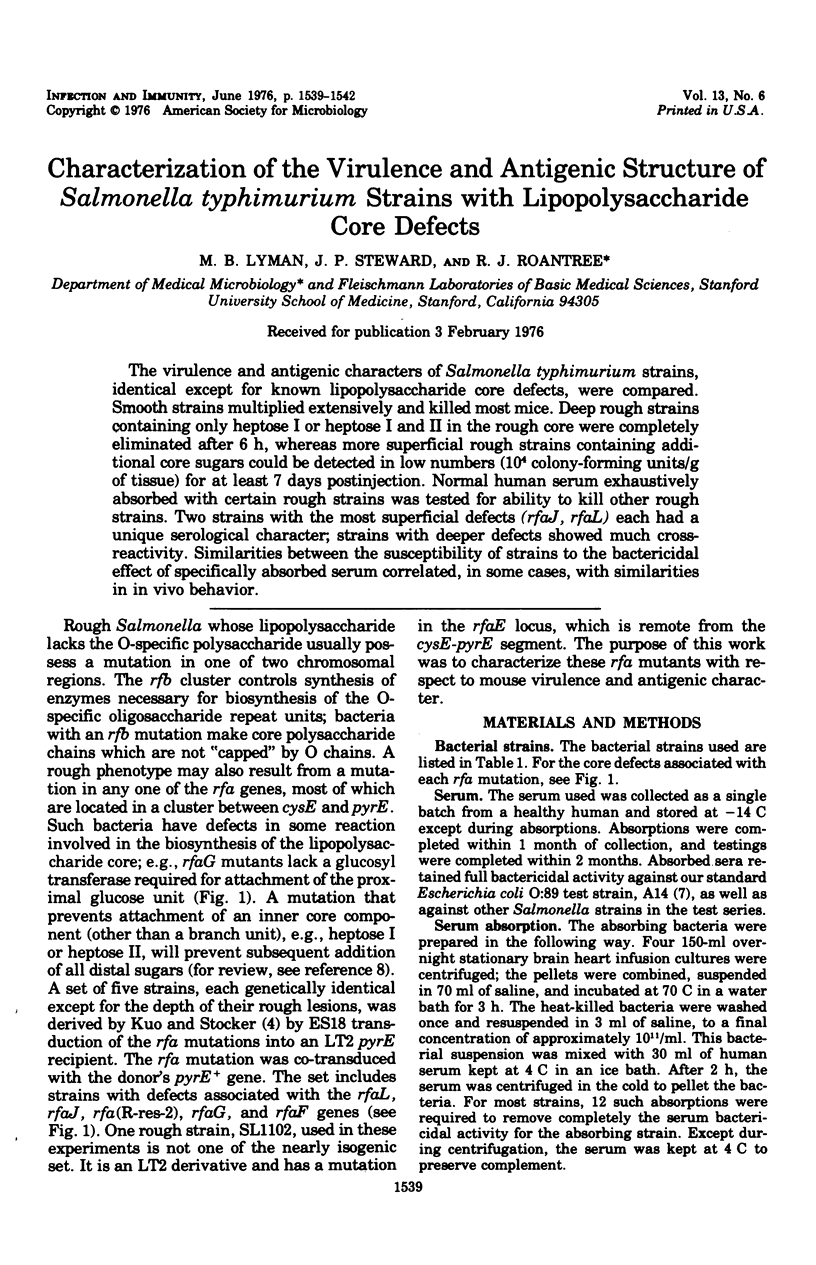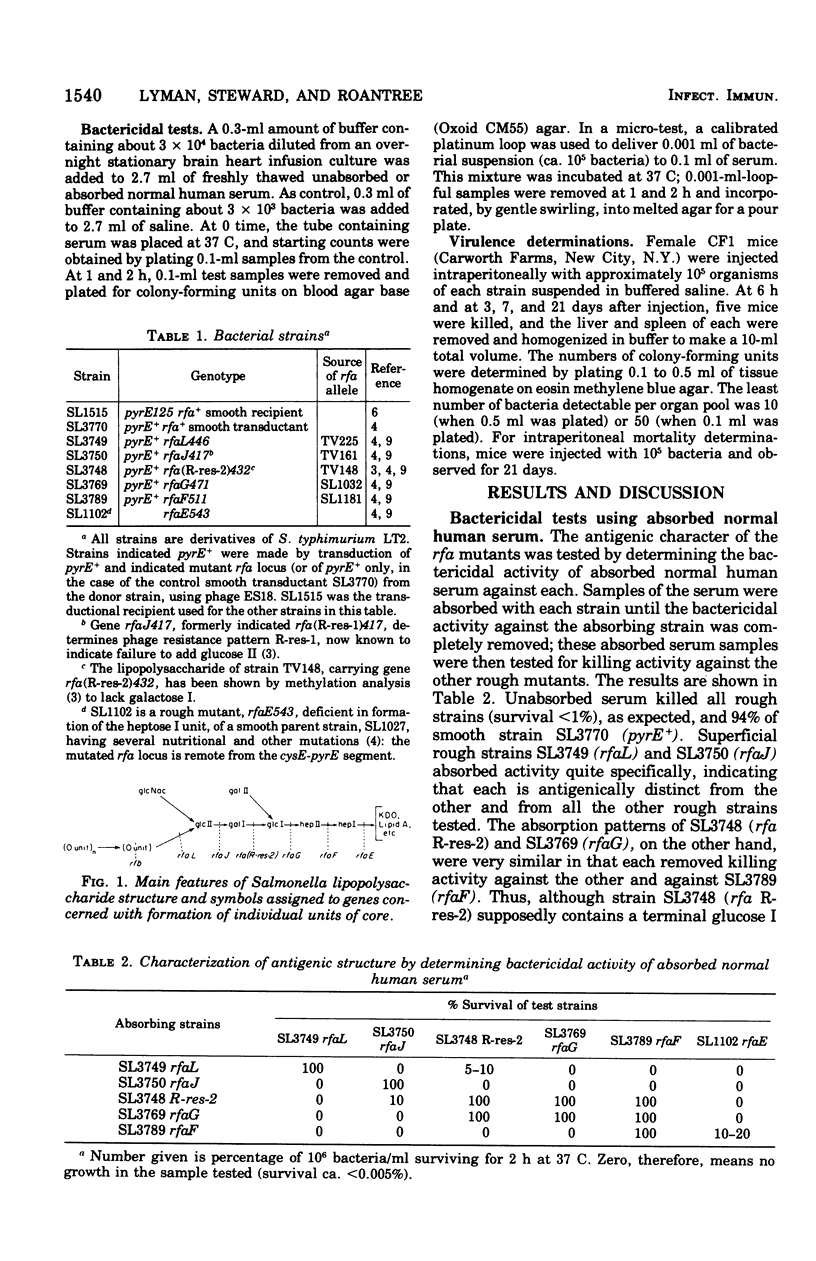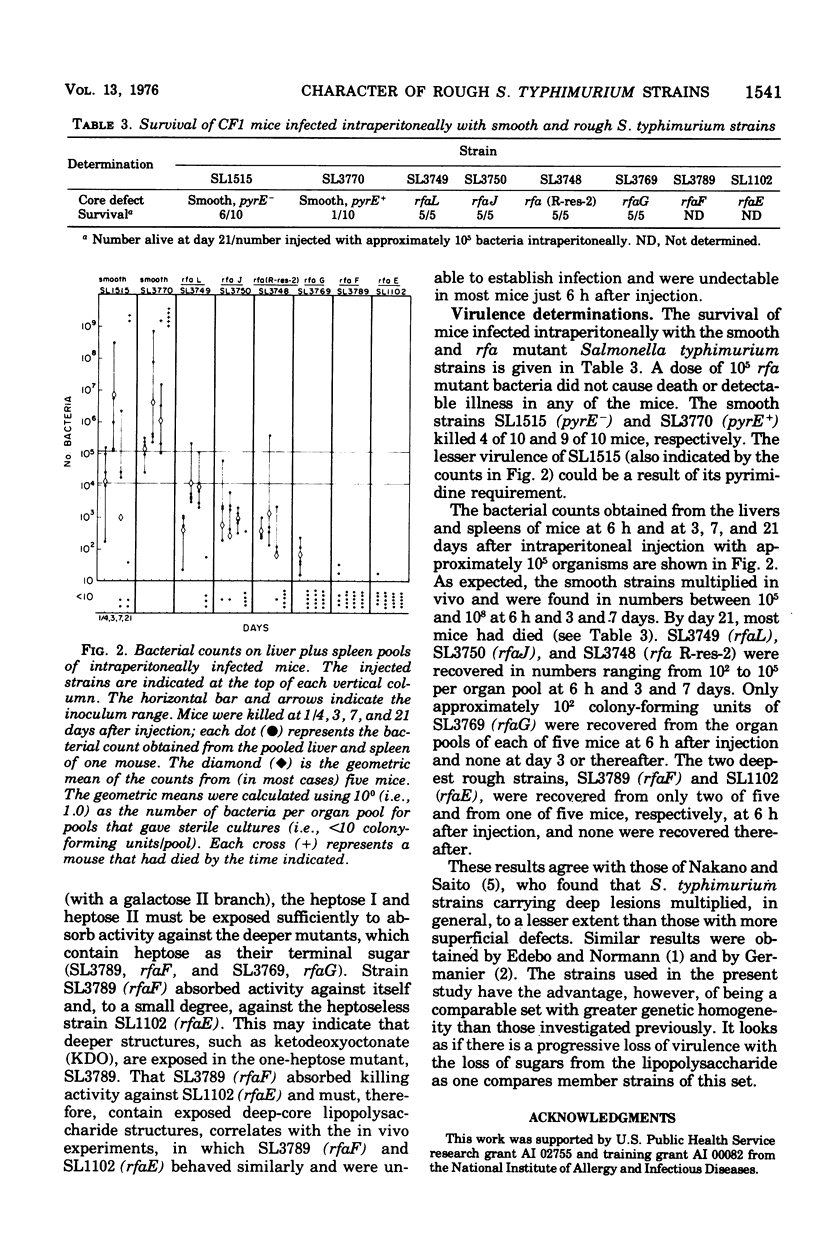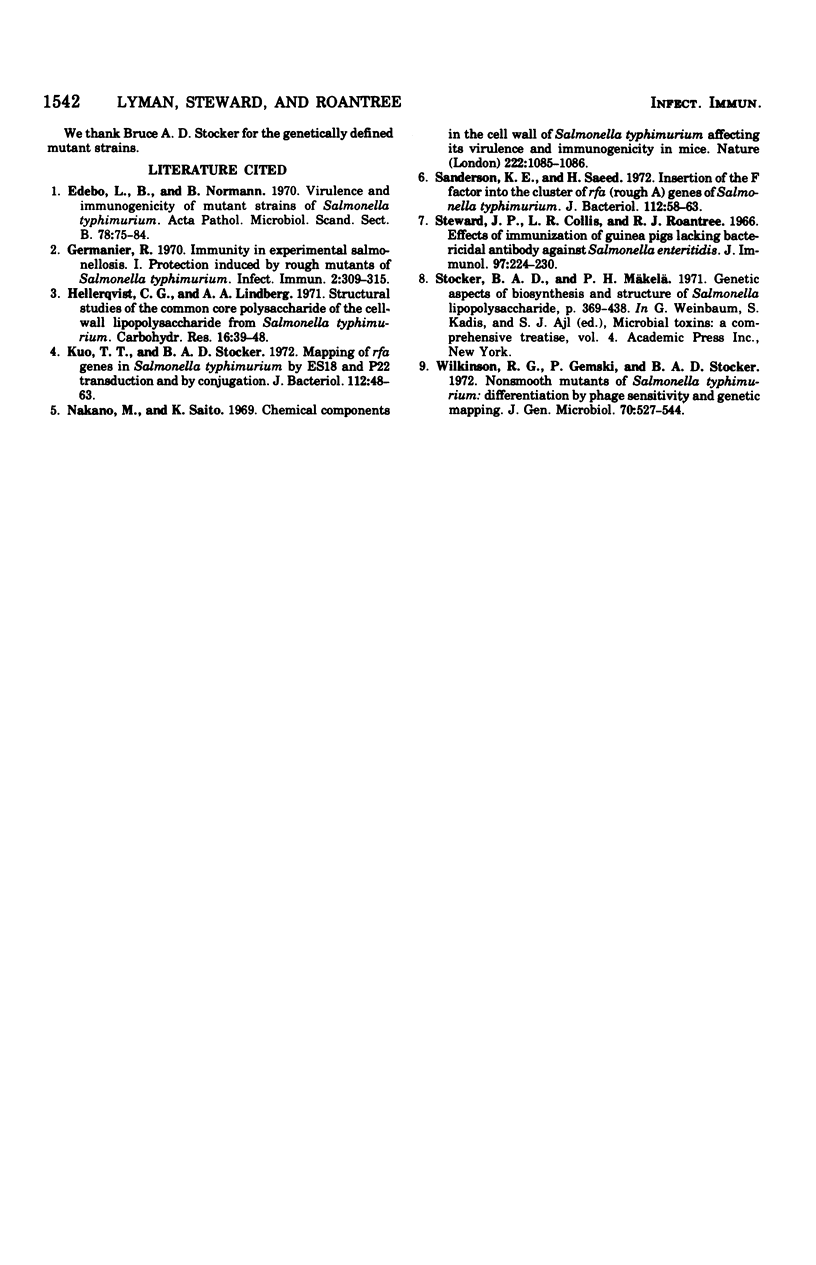Abstract
The virulence and antigenic characters of Salmonella typhimurium strains, identical except for known lipopolysaccharide core defects, were compared. Smooth strains multiplied extensively and killed most mice. Deep rough strains containing only heptose I or heptose I and II in the rough core were completely eliminated after 6 h, whereas more superficial rough strains containing additional core sugars could be detected in low numbers (10(4) colony-forming units/g of tissue) for at least 7 days postinjection. Normal human serum exhaustively absorbed with certain rough strains was tested for ability to kill other rough strains. Two strains with the most superficial defects (rfaJ, rfaL) each had a unique serological character; strains with deeper defects showed much cross-reactivity. Similarities between the susceptibility of strains to the bactericidal effect of specifically absorbed serum correlated, in some cases, with similarities in in vivo behavior.
Full text
PDF



Selected References
These references are in PubMed. This may not be the complete list of references from this article.
- Edebo L., Normann B. Virulence and immunogenicity of mutant strains of Salmonella typhimurium. Acta Pathol Microbiol Scand B Microbiol Immunol. 1970;78(1):75–84. doi: 10.1111/j.1699-0463.1970.tb04271.x. [DOI] [PubMed] [Google Scholar]
- Germanier R. Immunity in Experimental Salmonellosis I. Protection Induced by Rough Mutants of Salmonella typhimurium. Infect Immun. 1970 Sep;2(3):309–315. doi: 10.1128/iai.2.3.309-315.1970. [DOI] [PMC free article] [PubMed] [Google Scholar]
- Kuo T. T., Stocker B. A. Mapping of rfa Genes in Salmonella typhimurium by ES18 and P22 Transduction and by Conjugation. J Bacteriol. 1972 Oct;112(1):48–57. doi: 10.1128/jb.112.1.48-57.1972. [DOI] [PMC free article] [PubMed] [Google Scholar]
- Nakano M., Saito K. Chemical components in the cell wall of Salmonella typhimurium affecting its virulence and immunogenicity in mice. Nature. 1969 Jun 14;222(5198):1085–1086. doi: 10.1038/2221085a0. [DOI] [PubMed] [Google Scholar]
- Sanderson K. E., Saeed Y. A. P22-mediated transduction analysis of the rough A (rfa) region of the chromosome of Salmonella typhimurium. J Bacteriol. 1972 Oct;112(1):58–63. doi: 10.1128/jb.112.1.58-63.1972. [DOI] [PMC free article] [PubMed] [Google Scholar]
- Steward J. P., Collis L. R., Roantree R. J. Effects of immunization of guinea pigs lacking bactericidal antibody against Salmonella enteritidis. J Immunol. 1966 Aug;97(2):224–230. [PubMed] [Google Scholar]
- Wilkinson R. G., Gemski P., Jr, Stocker B. A. Non-smooth mutants of Salmonella typhimurium: differentiation by phage sensitivity and genetic mapping. J Gen Microbiol. 1972 May;70(3):527–554. doi: 10.1099/00221287-70-3-527. [DOI] [PubMed] [Google Scholar]


